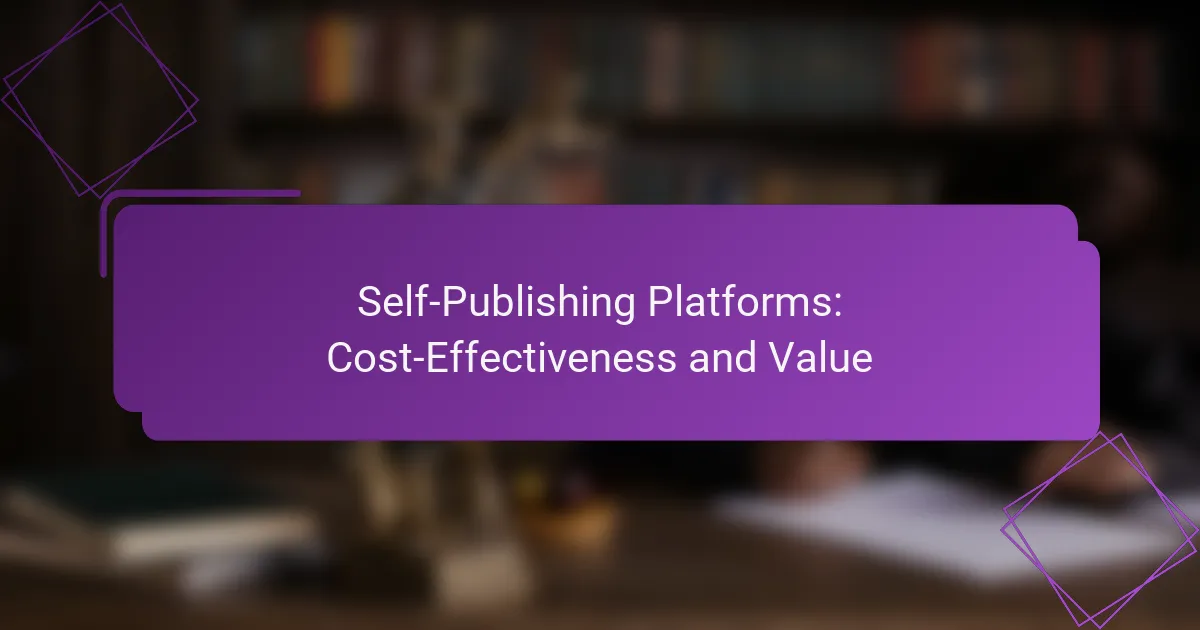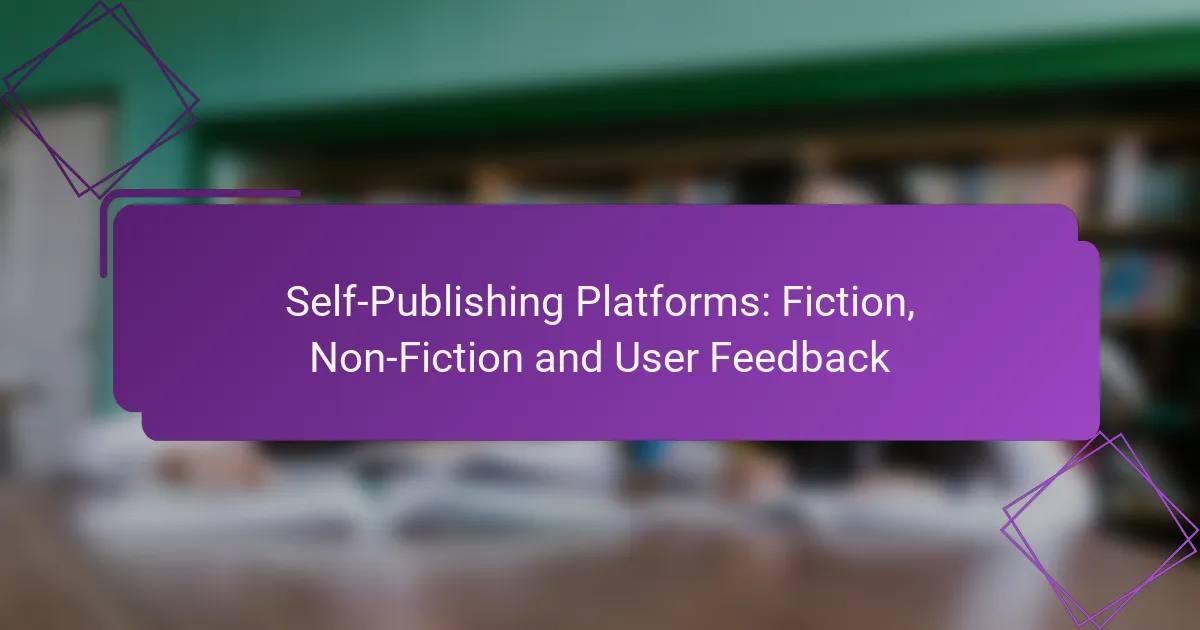Choosing the right self-publishing platform is essential for maximizing your earnings and ensuring a successful launch for your book. With options like Amazon Kindle Direct Publishing, IngramSpark, and others, each platform presents unique pricing structures and distribution models that can significantly affect your overall profits. Understanding these costs and their implications will help you select the most cost-effective solution tailored to your publishing goals.
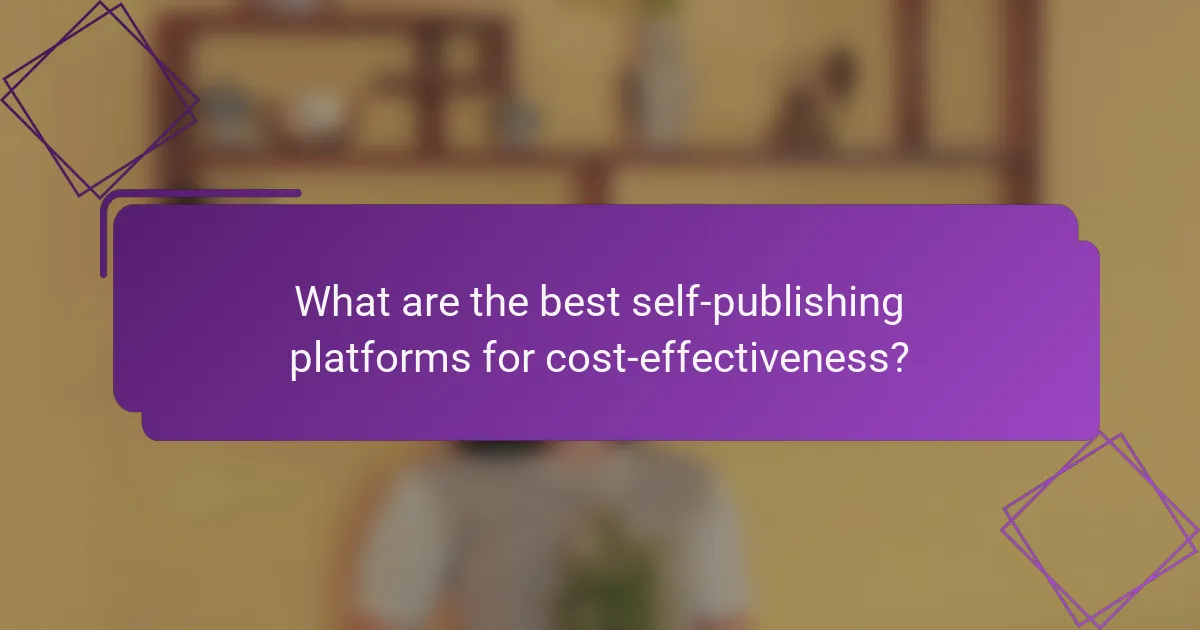
What are the best self-publishing platforms for cost-effectiveness?
Some of the best self-publishing platforms for cost-effectiveness include Amazon Kindle Direct Publishing, IngramSpark, Smashwords, Kobo Writing Life, and Draft2Digital. Each platform offers unique pricing structures and distribution options that can significantly impact your overall earnings and reach.
Amazon Kindle Direct Publishing
Amazon Kindle Direct Publishing (KDP) is a popular choice due to its ease of use and extensive reach. Authors can publish eBooks and paperbacks for free, with Amazon taking a percentage of royalties that typically ranges from 35% to 70% depending on the pricing and distribution choices.
To maximize earnings on KDP, consider pricing your eBook between $2.99 and $9.99, as this range qualifies for the higher royalty rate. Be mindful of promotional opportunities like Kindle Unlimited, which can increase visibility but may affect earnings per read.
IngramSpark
IngramSpark is a robust platform for authors looking to distribute both print and digital books widely. While it charges a setup fee (often around $49), it offers access to a vast network of retailers and libraries, making it a strong option for authors aiming for extensive distribution.
To ensure cost-effectiveness, take advantage of promotional codes that can waive setup fees. Additionally, consider the print-on-demand model to avoid upfront printing costs, allowing you to pay only for books sold.
Smashwords
Smashwords is an eBook distribution platform that allows authors to publish for free and reach multiple retailers, including Apple Books and Barnes & Noble. The platform takes a small percentage of sales, typically around 10% for direct sales and 15% for distribution to other retailers.
Authors should focus on formatting their eBooks correctly to meet Smashwords’ style guide, as this ensures smooth distribution. Utilizing the promotional tools available can also help boost visibility and sales without additional costs.
Kobo Writing Life
Kobo Writing Life offers a straightforward publishing process with no upfront costs, making it a cost-effective choice for authors. Kobo takes a commission of around 20% on sales, which is competitive compared to other platforms.
To maximize your earnings, consider pricing your eBooks competitively and participating in Kobo’s promotional programs. Kobo also provides insights and analytics to help you track sales and adjust your strategies accordingly.
Draft2Digital
Draft2Digital is known for its user-friendly interface and free publishing services, taking a cut of around 10% from sales. It distributes eBooks to various retailers, including Amazon, Apple Books, and more, allowing for broad reach without upfront costs.
Authors should take advantage of Draft2Digital’s free formatting tools and promotional features to enhance their book’s presentation. Regularly reviewing sales reports can help you identify trends and optimize your pricing strategy for better profitability.
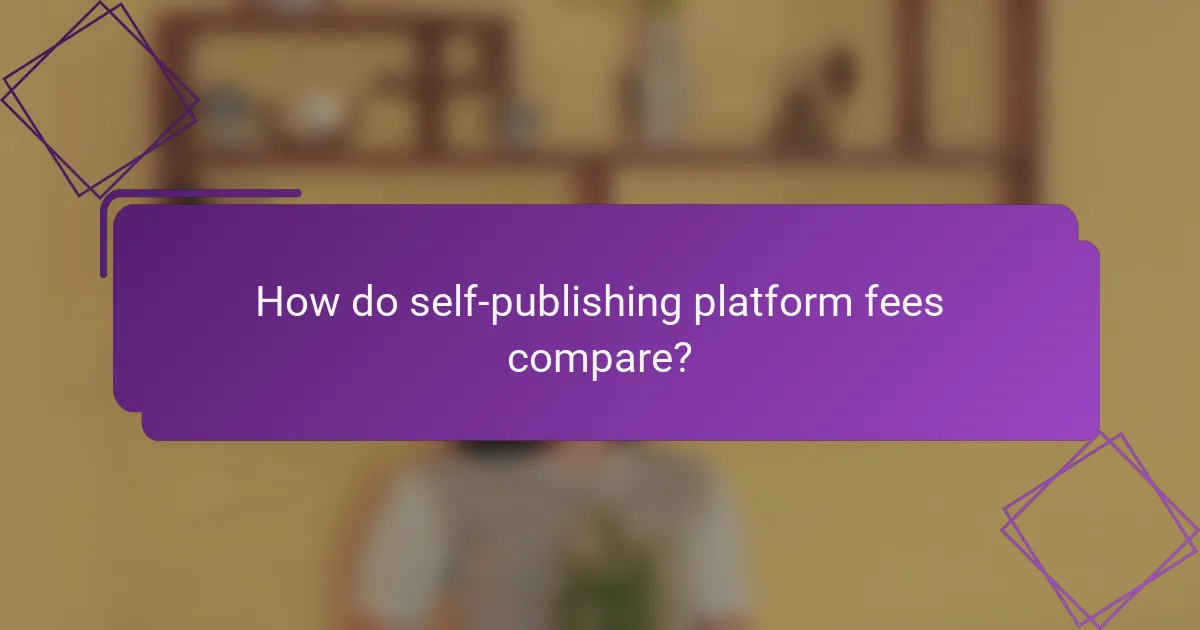
How do self-publishing platform fees compare?
Self-publishing platforms vary significantly in their fee structures, impacting authors’ earnings and overall value. Understanding these costs is crucial for maximizing profits and choosing the right platform for your needs.
Amazon Kindle fees
Amazon Kindle Direct Publishing (KDP) primarily charges a royalty fee based on the book’s price. Authors can choose between a 35% or 70% royalty option, with the latter applicable for books priced between $2.99 and $9.99. Additionally, there are delivery fees for eBooks, which can affect overall earnings.
For print books, KDP deducts printing costs from the author’s earnings, which depend on page count and whether the book is in black and white or color. Authors should carefully calculate these costs to determine their potential profits.
IngramSpark setup costs
IngramSpark charges a setup fee for each title published, typically ranging from $49 to $99, depending on promotional offers. This fee covers the distribution of both eBooks and print books to various retailers and libraries worldwide.
IngramSpark also has ongoing costs, such as a percentage of sales, which can vary based on the distribution channels chosen. Authors should weigh these costs against the extensive reach IngramSpark offers in the market.
Smashwords commission structure
Smashwords operates on a commission-based model, taking a percentage of sales from eBooks distributed through its platform. The standard commission is around 10% for direct sales, but this can increase to 20% or more for sales through third-party retailers.
Authors benefit from Smashwords’ wide distribution network, but it’s essential to factor in these commission rates when pricing eBooks. Understanding the commission structure helps authors set competitive prices while maintaining profitability.
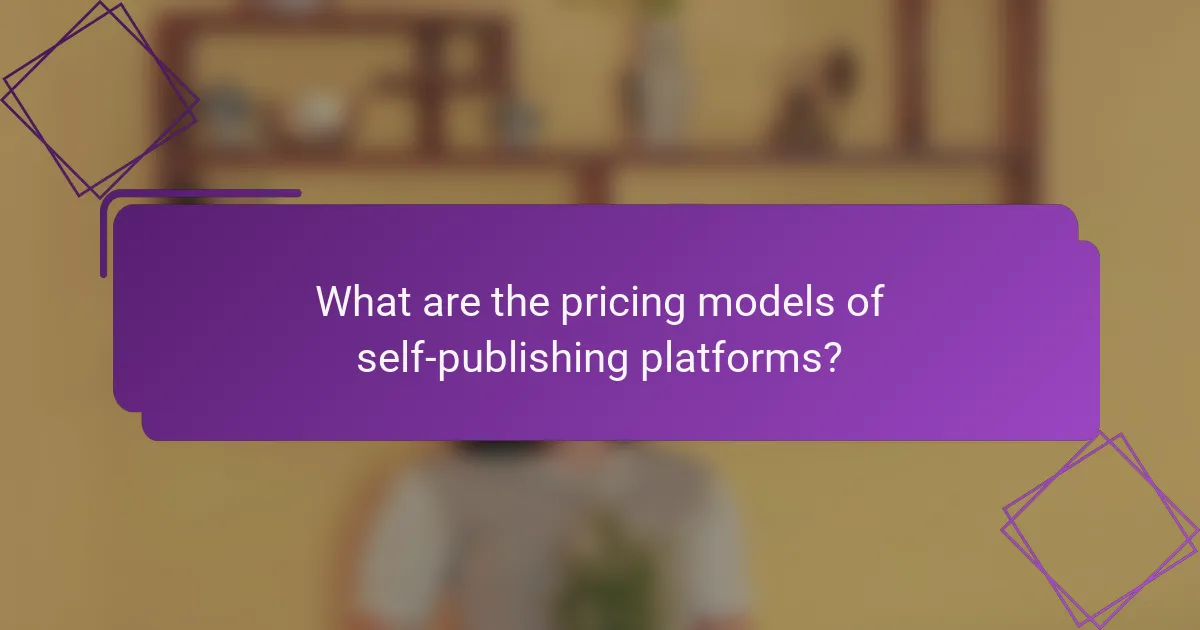
What are the pricing models of self-publishing platforms?
Self-publishing platforms typically operate under several pricing models, including royalty percentages, print-on-demand costs, and subscription fees. Understanding these models is crucial for authors to determine the most cost-effective option for their publishing needs.
Royalty percentages
Royalty percentages refer to the share of sales revenue that authors receive from their published works. Most platforms offer royalties ranging from 35% to 70%, depending on factors like pricing and distribution channels.
For instance, platforms like Amazon Kindle Direct Publishing (KDP) offer a 70% royalty option for eBooks priced between $2.99 and $9.99. Authors should carefully consider how pricing their books affects their earnings, as higher prices can lead to lower sales volume.
Print-on-demand costs
Print-on-demand (POD) costs are incurred when a book is printed only after an order is placed, eliminating upfront printing expenses. Authors typically pay a fixed cost per book, which can vary based on factors like page count and color printing.
For example, a black-and-white paperback might cost around $3 to $5 to print, while color printing can increase costs significantly. Authors should factor these costs into their pricing strategy to ensure profitability.
Subscription fees
Some self-publishing platforms charge subscription fees for access to their services, which can range from monthly to annual payments. These fees may cover additional features such as marketing tools, design services, or distribution options.
For instance, platforms like Reedsy offer subscription plans that provide access to professional services, while others may charge a flat fee for a specific service. Authors should evaluate whether the benefits of these subscriptions justify the costs based on their publishing goals.
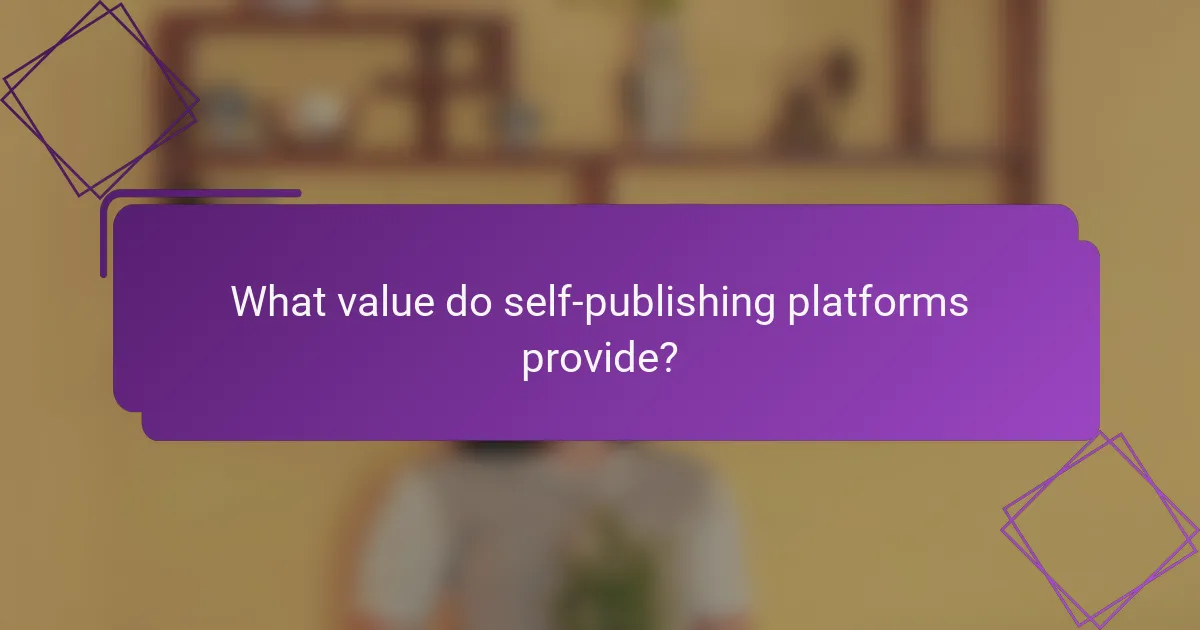
What value do self-publishing platforms provide?
Self-publishing platforms offer authors a cost-effective way to publish their work while retaining control over the entire process. They provide essential tools for distribution, marketing, and author support, enabling writers to reach their audience effectively and efficiently.
Distribution reach
Self-publishing platforms typically provide a wide distribution network that includes online retailers, libraries, and even print-on-demand services. Authors can often choose to distribute their books globally or focus on specific markets, which can significantly increase their visibility.
For example, platforms like Amazon Kindle Direct Publishing (KDP) and IngramSpark allow authors to reach millions of potential readers. Depending on the platform, authors may also have options for exclusive distribution deals that can enhance their sales potential.
Marketing tools
Many self-publishing platforms come equipped with built-in marketing tools designed to help authors promote their books. These tools can include promotional pricing, advertising options, and social media integration to boost visibility.
Authors should take advantage of these features to create effective marketing campaigns. For instance, using Amazon’s advertising services can help target specific demographics, while social media tools can facilitate direct engagement with readers.
Author support services
Support services are crucial for self-published authors, and many platforms offer resources such as editing, cover design, and formatting assistance. These services can help authors produce a professional-quality book that stands out in a crowded market.
Additionally, some platforms provide educational resources, such as webinars and articles, to help authors navigate the self-publishing process. Leveraging these support services can save time and improve the overall quality of the published work.

What are the prerequisites for using self-publishing platforms?
To effectively use self-publishing platforms, authors need to prepare their manuscript, obtain an ISBN, and design a suitable cover. These prerequisites ensure that the book meets industry standards and is ready for distribution.
Manuscript formatting
Proper manuscript formatting is essential for self-publishing. Most platforms have specific guidelines regarding font type, size, margins, and spacing. For example, using a standard font like Times New Roman in 12-point size with double spacing is common.
Authors should also consider the final format of their book, whether it will be printed or digital. Each format may have different requirements, such as page size for print or file type for eBooks. Familiarizing yourself with these specifications can save time and prevent rejections.
ISBN requirements
An ISBN (International Standard Book Number) is crucial for selling books through retailers and libraries. Self-publishing platforms often require authors to provide an ISBN, which can be purchased from designated agencies. In the U.S., the cost for a single ISBN typically ranges from $125 to $295.
Some platforms offer free ISBNs, but these may come with restrictions, such as limiting the author’s control over the book’s rights. Authors should weigh the benefits of purchasing their own ISBN against the convenience of using a platform-provided number.
Cover design specifications
Cover design is a vital aspect of self-publishing, as it influences a reader’s first impression. Each platform has specific requirements for cover dimensions, resolution, and file format. For instance, a common requirement is a minimum resolution of 300 DPI for print covers.
Authors should also consider the design elements that attract their target audience, such as color schemes and typography. Utilizing professional design software or hiring a graphic designer can enhance the quality of the cover, making it more appealing in a competitive market.
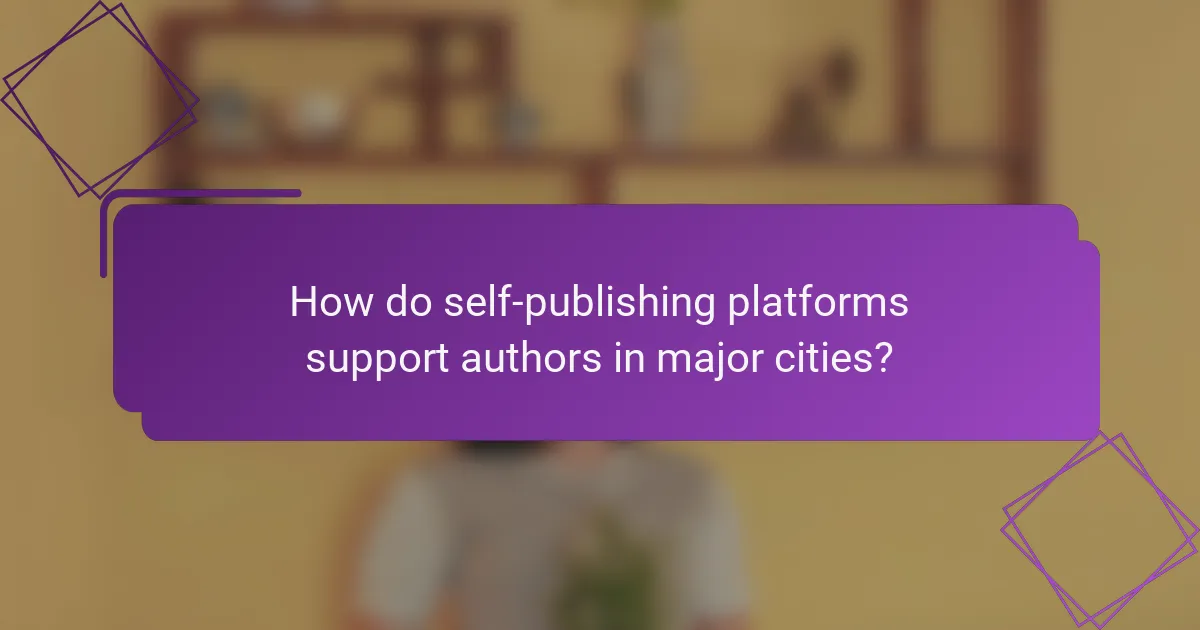
How do self-publishing platforms support authors in major cities?
Self-publishing platforms provide essential tools and resources for authors in major cities, enabling them to publish, market, and distribute their works effectively. These platforms often offer user-friendly interfaces, access to global distribution networks, and various marketing tools tailored to urban audiences.
Access to Global Distribution
Self-publishing platforms allow authors to reach a wide audience by distributing their books through major online retailers and local bookstores. Authors can publish in multiple formats, such as eBooks and print-on-demand, ensuring their work is available to readers in different formats and locations.
For instance, platforms like Amazon Kindle Direct Publishing and IngramSpark provide extensive distribution channels that can include both international and local markets. This broad reach is particularly beneficial for authors in cities with diverse populations, as it allows them to connect with various reader demographics.
Marketing and Promotion Tools
Many self-publishing platforms offer integrated marketing tools to help authors promote their books effectively. These tools can include social media integration, email marketing options, and promotional pricing strategies that can attract more readers.
Authors can utilize features like Amazon’s Kindle Countdown Deals or Goodreads giveaways to increase visibility. Additionally, platforms often provide analytics to track sales and reader engagement, enabling authors to refine their marketing strategies based on real-time data.
Cost-Effectiveness
Self-publishing can be a cost-effective option for authors, especially in major cities where traditional publishing routes may involve significant expenses. Most platforms charge minimal upfront fees or take a percentage of sales, allowing authors to retain a larger share of their profits.
For example, authors might pay a small fee for ISBNs or cover design but can avoid the high costs associated with traditional publishing houses. This financial flexibility allows authors to invest in other areas, such as marketing or professional editing, to enhance their book’s quality and reach.
Community and Networking Opportunities
Self-publishing platforms often foster communities where authors can connect, share experiences, and collaborate. Many platforms host forums, webinars, and workshops that provide valuable insights into the publishing process and marketing strategies.
In major cities, these networking opportunities can lead to partnerships with local bookstores, literary events, and even collaborations with other authors. Engaging with a community can provide support and motivation, which is crucial for authors navigating the self-publishing landscape.
